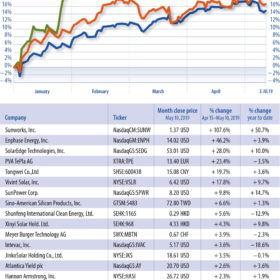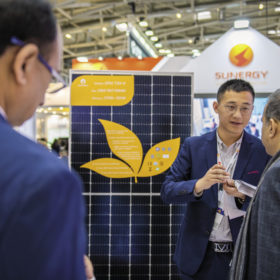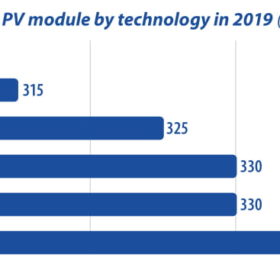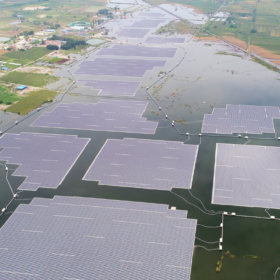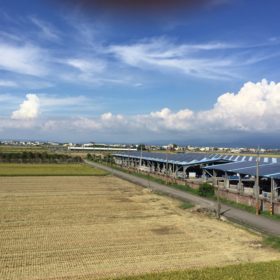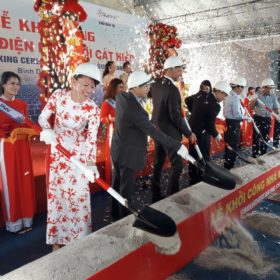Strength in diversity
Different flavors, colors and creeds; a source of resiliency in the face of rapid change. And as it is true for our societies, so is it for our modern solar industry – with the growing number of PV markets of significance and the increasing diversity of product offerings providing a buffer to potential headwinds. Encouragingly, […]
Demand outside of China
With market growth in a range of markets exceeding expectations, solar stocks are continuing to perform strongly. The Guggenheim Solar ETF (TAN) was up 2.7% from the previous index, while S&P 500 and Dow decreased.
Sharp cell, module distinctions begin to form
The cost effectiveness of solar energy is becoming a top priority in terms of the selection of end market products, writes EnergyTrend’s Lions Shih. The result? A more varied and diverse module landscape alongside mono’s continued rise.
China’s new solar FIT policy
On April 30, China’s National Development and Reform Commission released the “Improving Issues Related to Feed-in Tariffs for Solar Photovoltaic” notice, the first document that confirms the level of FIT payments for solar projects following several consultation papers issued previously this year. The new FIT rates are set to be effective starting July 1.
The sun rises on the bifacial module market
With market penetration exceeding expectations in 2018, bifacial technology is set to account for one third of global solar module production by 2022, writes Edurne Zoco, Research Director at IHS Markit. Bifacial and half-cell technologies are rapidly gaining momentum due to their improvements in power output, along with their low implementation barriers and minimal capex requirements.
Possible scenarios
China’s role as a solar manufacturing powerhouse is unrivaled, and its end market continues to dictate global growth, writes SPV Market Research’s Paula Mints.
China’s hard change towards grid parity
Each shift in Chinese PV policy is watched by the solar world. And the reforms unveiled in late April and early May have left many scrambling to catch up. While they may reign in unbridled growth, the changes are leaning towards a future of further cost reductions, particularly soft costs, and the golden goal of grid parity PV.
PV going private in Taiwan
To date, the majority of Taiwan’s solar projects have sold power into the grid, with developers signing 20 year PPAs with the island’s utility Taiwan Power Company (Taipower). But new regulations now aim to make private power purchase agreements (PPAs) a more attractive option for PV developers on the island.
Commercial appeal
Has Vietnam’s moment in the sun finally arrived? New solar installations soared in 2018, pushing the nation’s cumulative installed PV capacity from just 8 MW to 106 MW, according to statistics from the International Renewable Energy Agency (IRENA). And while development has continued to surge at the utility scale since the start of this year, it’s the commercial and industrial (C&I) segment that may ultimately offer the greatest long-term promise.
Virtual certainty
With the excitement of its subsidy-driven renewables boom now firmly in the past, and the full liberalization of its electric power market looming on the horizon, Japan has become a hotbed for virtual power plant (VPP) development. A number of companies have launched demonstration projects in recent years, backed by the Japanese government’s Sustainable Open Innovation Initiative (SII).

